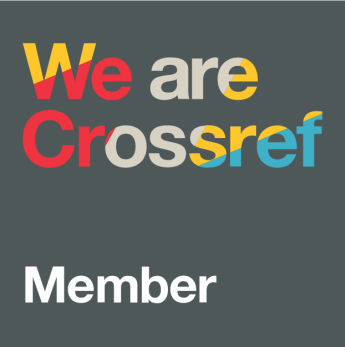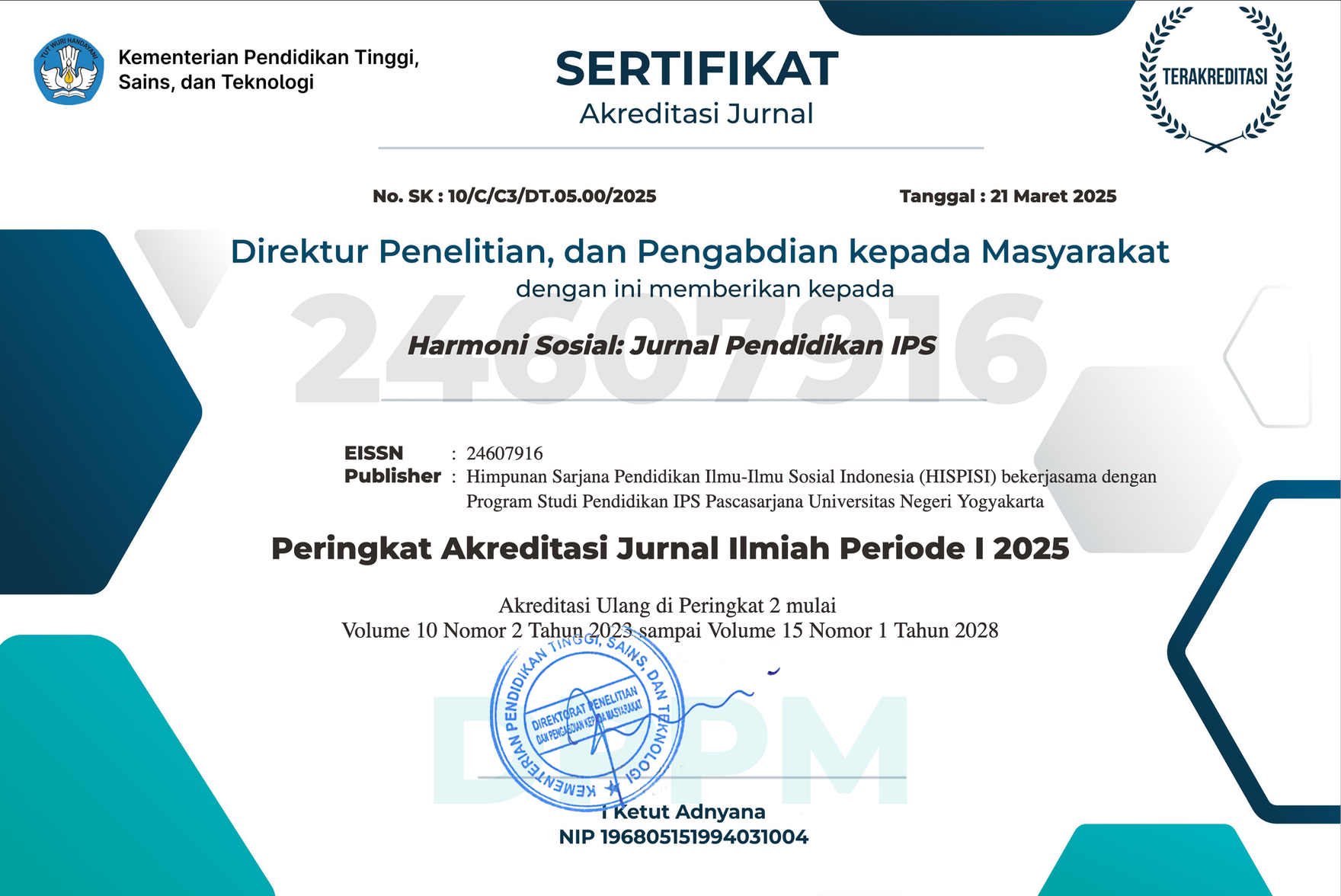Communication model of mosque youth lifestyle in religious life
Downloads
The youth community of Muhammadiyah mosques, Nahdatul Ulama (NU), Tabligh and the Indonesian Islamic Da'wah Institute (LDII) have differences in carrying out worship and lifestyle behaviors. This research has three main objectives: first, to describe the religious practices of the four mosque youth communities; second, to examine the lifestyle through the perspective of Islamic identity communication; and third, to formulate a model of lifestyle communication in the context of different religions between these communities. The approach of this research is qualitative with a phenomenological framework. The informants involved came from four mosque youth groups that were the object of the study. The results of the study show, first, that the differences in religious lifestyles among the four Muslim youth communities triggered friction between groups. Second, there are variations in lifestyles, ways of dressing or fashion, consumption patterns, and communication patterns have the potential for conflict leading to conflict. Third, this study succeeded in identifying two types of communication models: formal communication that focuses on harmonizing religious understanding, such as the interpretation of teachings, the implementation of worship, and the principle of inviting goodness to avoid evil, and informal communication that forms the Islamic identity of youth through social interaction, da'wah content, language style, peer influence, and elements of humor. This research contributes to opening new spaces for socio-religious studies that are more contextual and responsive to the social realities of contemporary Muslims.
Downloads
Abdullah, Mohd Firdaus, Arba’Iyah Mohd Noor, Wan Hasmah Wan Teh, Mohd Amir Mohd Zahari, and Mardiana Ismail. 2024. “Cultural Imperialism and Popular Culture: Unveiling the Influence of Salmah Ismail @ Saloma in the Federation of Malaya.” Jurnal Komunikasi: Malaysian Journal of Communication 40 (1): 17–42. https://doi.org/10.17576/JKMJC-2024-4001-02.
Abidin, Mustika. 2022. “URGENSI KOMUNIKASI MODEL STIMULUS ORGANISM RESPONSE (S-O-R) DALAM MENINGKATKAN KUALITAS PEMBELAJARAN.” Jurnal Komunikasi & Bahasa 3 (1): 47–59.
Ali, Mohd Nor Shahizah, Nessa Ameera Mohamed Salim, Karim Harun, Mohd Hanafi Mohd Yasin, and Norashikin Hamzah. 2025. “Model Reka Bentuk Pemikiran Dan Strategi Komunikasi Visual Pelajar Disleksia Terhadap Penguasaan Peribahasa Melayu Melalui Papan Permainan MOHD NOR SHAHIZAN ALI A Design Thinking Model and Visual Communication Strategies for Enhancing Dyslexic Students ’.” Jurnal Komunikasi: Malaysian Journal of Communication 41 (1): 182–200.
Ancheta, Jeffrey Rosario. 2025. “Computer-Mediated Communication in Language Teaching: Challenges and Responses of Filipino ESL Teachers in the Philippines.” Jurnal Komunikasi: Malaysian Journal of Communication 41 (1): 351–67. https://doi.org/10.17576/JKMJC-2025-4101-20.
Anjani, Ratna Dwi, and Aceng Kosasih. 2024. “Peran Komunitas Agama Islam Dalam Membangun Toleransi Dan Menuntaskan Konflik Agama Di Indonesia.” Jurnal At-Taujih: Jurnal Bimbingan Dan Konseling Islam IV (1): 2798–3978.
Ar, Eka Hendry. 2024. “Political Movement of Islamic Religious Groups and Its Potential Conflict : A Study on Salafi in Pontianak ,.” Jurnal Sosiologi Walisongo 8 (2): 197–212. https://doi.org/10.21580/jsw.2024.8.2.21972.
Bahri, Hannum Zulfah, Dina Trie Heny Aliya, Zarli Sallimah Lubis, and Abdi Sauqi Farhan Harahap. 2023. “Ukhuwah Islamiyah Envelops the Life of the Mesjid Village Community Amidst the Difference Between the Muhammadiyah Community and the NU Community.” MAQOLAT: Journal of Islamic Studies 1 (3): 113–22. https://doi.org/10.58355/maqolat.v1i3.18.
Balakrishnan, Kavitha, Ajitha Angusamy, Riya Gunvantrai Patil, and Muhammad Nur Fitri Razak. 2024. “Enhancing Work Performance: The Role of Communication and Leadership Styles.” Jurnal Komunikasi: Malaysian Journal of Communication 40 (1): 376–94. https://doi.org/10.17576/JKMJC-2024-4001-21.
Carlo, Maria De, Aurora Castellani, Lia Corrieri, Giulia Mattiacci, and Federico Batini. 2023. “La Parola Agli Studenti! Un’esperienza Di Focus Group a Scuola Sul Tema Della Lettura Nell’ambito Della Politica Educativa «Leggere: Forte! Ad Alta Voce Fa Crescere l’intelligenza».” Journal of Educational, Cultural and Psychological Studies (ECPS Journal) 25 (27). https://doi.org/10.7358/ecps-2023-027-deca.
Charoenthansakul, Tanaporn, and Wannarat Natee. 2024. “Participatory Communication of Thai Youth in Strengthening Pride in Their Local Southern Identity.” Jurnal Komunikasi: Malaysian Journal of Communication 40 (4): 68–88. https://doi.org/10.17576/JKMJC-2024-4004-04.
Christensen, Gerd. 2023. “Three Concepts of Power: Foucault, Bourdieu, and Habermas.” Power and Education 16 (2): 182–95. https://doi.org/10.1177/17577438231187129.
Chuah, Kee Man, Radina Mohamad Deli, and Looi Chin Ch’ng. 2025. “Gen Z and Group Work: How Communication Styles Affect Free-Riding Behaviours.” Jurnal Komunikasi: Malaysian Journal of Communication 41 (1): 423–37. https://doi.org/10.17576/JKMJC-2025-4101-24.
Collins, Harry, Robert Evans, and Luis Reyes-Galindo. 2024. “Virtual Diversity: Resolving the Tension between the Wider Culture and the Institution of Science.” Social Studies of Science. https://doi.org/10.1177/03063127241263609.
Eko, Fiki Mochammad, Haqqi Dhiyaul Mumtaza-Al, and Parulian Yoga Panggabean. 2024. “Kontruksi Sosial Tradisi Sekaten Surakarta Dalam Perspektif Teori Tafsir Sosial.” TUTURAN: Jurnal Ilmu Komunikasi, Sosial Dan Humaniora 2 (3): 151–59. https://doi.org/10.47861/tuturan.v2i3.1079.
Fadila, Helya. 2025. “KONSTRUKSI SOSIAL MASYARAKAT TERHADAP BERITA HOAKS MELALUI MEDIA SOSIAL WHATSAPP PADA MASA KAMPANYE PEMILU 2024 Huma Kalimantan.” Huma: Jurnal Sosiologi 4 (2): 216–27.
Fakhrurozi, Jafar, Dadang Suganda, Lina Meilinawati Rahayu, and Nani Darmayanti. 2025. “Construction of Islamic Identity in the Lampung Community Leadership System through Folk Poetry.” Cogent Arts and Humanities 12 (1). https://doi.org/10.1080/23311983.2025.2451494.
Hamzanwadi, St Samsuduha, and Andi Hasirani. 2025. “Hijab Dan Gender: Telaah Kasus Laki-Laki Berhijab Melalui Lensa Konseling Islam Di Masjid Hubbul Wathon Mataram.” Jurnal Mimbar 11 (1).
Harjana, Dwi, Muhammad Amri, and Abdullah. 2025. “Fundamentalisme Dalam Islam.” Jurnal Alwatzikhoebillah : Kajian Islam, Pendidikan, Ekonomi, Humaniora 11 (2): 411–19. https://doi.org/10.37567/alwatzikhoebillah.v11i2.3475.
Hennida, Citra, Demas Nauvarian, Nabila Olivia Saptari, and Rizky Sugianto Putri. 2024. “The Role of Belief Systems and Misperceptions in Halal Tourism Policy: Evidences from Indonesia.” Cogent Social Sciences 10 (1). https://doi.org/10.1080/23311886.2024.2352915.
Hidayat, Dasrun, Arismayadi Dirantika, and Ilyas Lampe. 2024. “Understanding the Role of Communication Ethics in the Flexing Phenomenon on Social Media.” Jurnal Komunikasi: Malaysian Journal of Communication 40 (3): 58–73.
Isafitri, Nada Salsabila, and Mirna Nur Alia Abdullah. 2025. “KEPUTUSAN TIDAK MEMILIKI ANAK DALAM PERSPEKTIF TEORI KONSTRUKSI.” SABANA (Sosiologi, Antropologi, Dan Budaya Nusantara) 4 (1): 32–37. https://doi.org/10.55123/sabana.v4i1.3425.
Laeheem, Kasetchai. 2025. “Development of Learning Activities for Ethical Promotion of Adherence to the Faith for Muslim Youth in the Three Southern Border Provinces.” Kasetsart Journal of Social Sciences 46 (1). https://doi.org/10.34044/j.kjss.2025.46.1.13.
Latif, Muhaemin, and Erwin Hafid. 2021. “Multicultural Attitudes in an Islamic Boarding School of South Sulawesi–Indonesia.” Cogent Education 8 (1). https://doi.org/10.1080/2331186X.2021.1968736.
Maddock, Jay E., and Howard Frumkin. 2024. “Physical Activity in Natural Settings: An Opportunity for Lifestyle Medicine.” American Journal of Lifestyle Medicine 19 (1): 73–87. https://doi.org/10.1177/15598276241253211.
Maidartati, Sri Hayati, Dhestirati Endang Anggraeni, Erna Irawan, and Dwi Ayu. 2022. “Gambaran Sedentary Lifestyle Pada Remaja Di SMA Kota Bandung.” Jurnal Keperawatan 10 (2): 250–65.
Mashuri, Saepudin, Sauqi Futaqi, Muhammad Irfan Hasanuddin, Khaeruddin Yusuf, Rusdin, Rusli Takunas, Bahdar, Rizqi Dwicahyanti, and Ilham Dwitama Haeba. 2024. “The Building Sustainable Peace through Multicultural Religious Education in the Contemporary Era of Poso, Indonesia.” Cogent Education 11 (1). https://doi.org/10.1080/2331186X.2024.2389719.
Moewashi Idharoel Haq, Andri. 2024. “Implementation of the Concept of Progressive Islamic Education in Muhammadiyah and Its Challenges in the Age of Social Media.” Progresiva : Jurnal Pemikiran Dan Pendidikan Islam 13 (01): 145–64. https://doi.org/10.22219/progresiva.v13i01.33207.
Njoku, Emeka Thaddues. 2025. “Counter-Terrorism Measures and Civil Society Organisations: A Review of Literature and Agenda for Future Research.” Journal of Civil Society, 1–31. https://doi.org/10.1080/17448689.2025.2451928.
Pramono, M S, T Tampake, I Y M Lattu, and ... 2024. “Peter L. Berger and Thomas Luckmann’s Social Construction of the Institutionalization of Tolerance Values in the Nyadran Perdamaian Tradition.” Almaarief 6 (1): 50–61. https://ejurnal.iainpare.ac.id/index.php/ALMAARIEF/article/view/9759.
Priyowidodo, Gatut, Nik Adzrieman Abd Rahman, Jandy E. Luik, Inri Inggrit Indrayani, and Ido Prijana Hadi. 2024. “Political Influencers on Social Media: Language Used and Content of Communication Strategy of Indonesian Politicians’ Twitter Accounts.” Jurnal Komunikasi: Malaysian Journal of Communication 40 (1): 99–199. https://doi.org/10.17576/JKMJC-2024-4001-06.
Putri, Hanifah Hertanti, and Aziz Muslim. 2023. “Internalisasi Sifat Wara’ Dalam Konsumsi Makanan Halal (Telaah Teori Konstruksi Sosial Peter L. Berger).” Jurnal Riset Agama 3 (1): 108–221. https://doi.org/10.15575/jra.v3i1.23622.
Rahma, Vicky Izza El, and Nasiri Nasiri. 2024. “Nahdlatul Ulama’s Domination in Madura: An Eco-Anthropological Perspective.” International Journal of Islamic Thought and Humanities 3 (1): 13–25. https://doi.org/10.54298/ijith.v3i1.180.
Ramadhan, Syahru, Yayuk Kusumawati, and Hermansyah Hermansyah. 2024. “Penguatan Gerakan Dakwah Muhammadiyah Melalui Program Pendampingan Partisipatif Di Tingkat Ranting Muhammadiyah Desa Kananga.” Taroa: Jurnal Pengabdian Masyarakat 3 (1): 50–63. https://doi.org/10.52266/taroa.v3i1.2552.
Sadat, Anwar, Herman Lawelai, Muhammad Younus, and Achmad Nurmandi. 2025. “Comparative Analysis of National Cyber Security Index: A Case Study of Pakistan and Indonesia.” Kasetsart Journal of Social Sciences 46 (1). https://doi.org/10.34044/j.kjss.2025.46.1.01.
Saumantri, Theguh. 2023. “Membangun Kerukunan Beragama Di Era Pluralisme: Kontribusi Konsep John Hick.” Religi: Jurnal Studi Agama-Agama 19 (1): 111–27.
Sholikhah, Zumrotus, and M B Muvid. 2022. “Konsep Islam Moderat Sebagai Alternatif Dalam Proses Penanggulangan Paham Radikal Di Indonesia.” Al-Afkar, Journal For Islamic Studies null: null. https://doi.org/10.31943/afkarjournal.v5i4.324.
Siregar, Idris, Nur Hayati, Zaitun Saftia, Universitas Islam, and Negeri Sumatera. 2024. “Sinkritisme Dalam Studi Agama.” Jurnal Penelitian Multidisiplin Terpadu 8 (6): 214–21.
Srinivasan, Mahesh, and Audun Dahl. 2024. “To Accept or Reject? Hindu and Muslim Children’s Views of Religious, Moral, and Conventional Norms.” Journal of Cognition and Development 25 (4): 573–601. https://doi.org/10.1080/15248372.2024.2346105.
Sulaiman, Baso. 2025. “Strategi Jamaah Tabligh Dalam Meningkatkan Amalan- Amalan Masjid.” Jurnal Ilmiah Ilmu Pendidikan 8 (2): 2271–79.
Taufikin, Sri Nurhayanti, Ahmad Falah, Moh Sholihuddin, and Habib Badawi. 2025. “Integrating Creative Digital Content in Pesantren: Improving Santri’s Santri’s Digital Literacy And Islamic Learning.” Edukasia Islamika 10 (1): 172–90. https://doi.org/10.28918/jei.v10i1.10326.
Taufiq, Muhammad. 2025. “KONSTRUKSI KEBENARAN HAKIKI DALAM EPISTEMOLOGI ISLAM BAYĀNĪ, ‘IRFĀNĪ DAN BURHĀNĪ ‘ĀBID AL-JĀBIRĪ.” Jurnal Studi Islam & Sosial -IKLILA 8 (1). https://doi.org/10.61941/iklila.v8i1.349.
Tohari, Achmad, and Al Ahmad Farabi. 2023. “Konstruksi Sosial Remaja Masjid Assyahiddin Pada Masyarakat Dalam Perspektif Peter L. Berger.” Dakwatul Islam 7 (2): 123–48. https://doi.org/10.46781/dakwatulislam.v7i2.669.
Vikdahl, Linda, Arniika Kuusisto, and Arto Kallioniemi. 2024. “Young People’s Experiences of Religious Socialisation in Sweden and Finland.” International Journal of Children’s Spirituality 29 (1): 1–17. https://doi.org/10.1080/1364436X.2023.2265074.
Yusup, Maulana, Riyan Rahmat Fadilah, and Milana Abdillah Subarkah. 2024. “Peran Organisasi Islam Dalam Edukasi Bahaya Judi Online.” Masterpiece: Journal of Islamic Studies and Social Sciences 2: 199–206. https://doi.org/10.62083/btm8f465.

This work is licensed under a Creative Commons Attribution-ShareAlike 4.0 International License.
The Authors submitting a manuscript do so on the understanding that if accepted for publication, copyright publishing of the article shall be assigned to Harmoni Sosial: Jurnal Pendidikan IPS
 | Harmoni Sosial: Jurnal Pendidikan IPS by http://journal.uny.ac.id/index.php/hsjpi is licensed under a Creative Commons Attribution-ShareAlike 4.0 International License. |









 ISSN Print
ISSN Print









